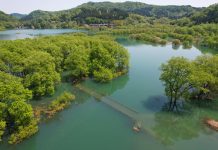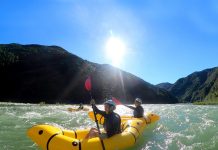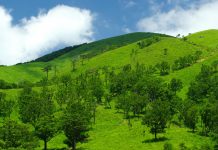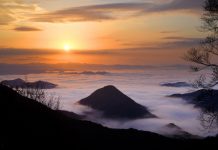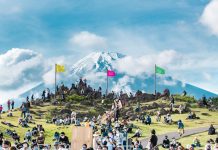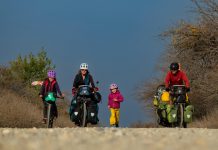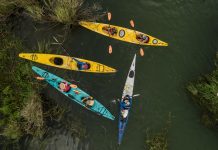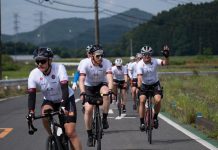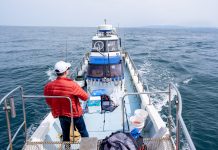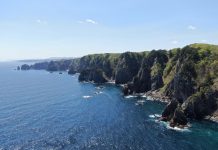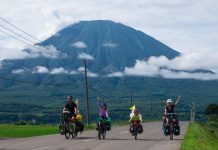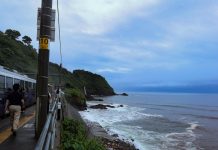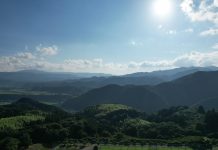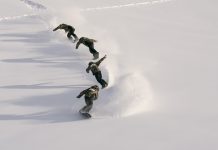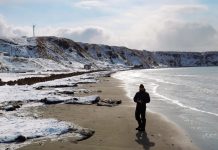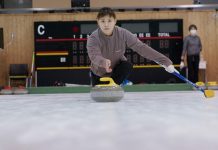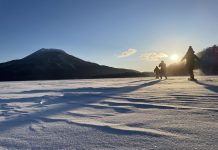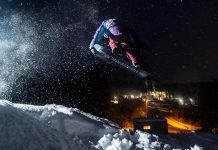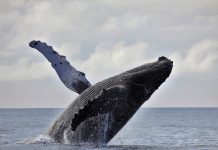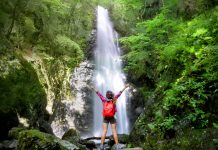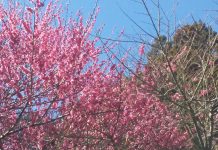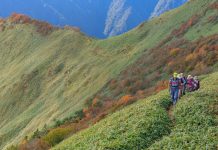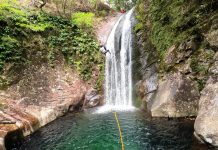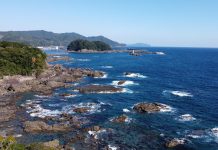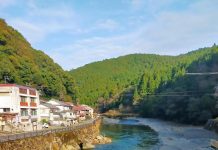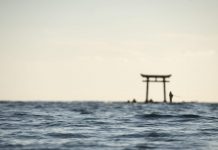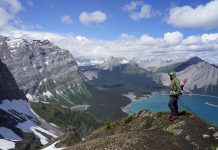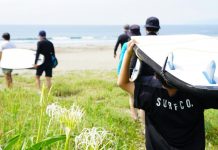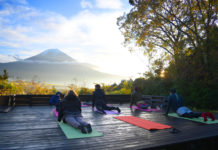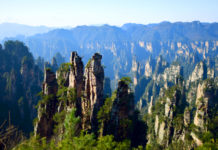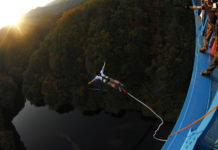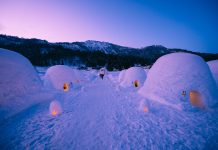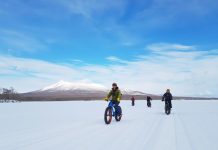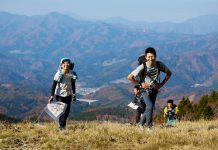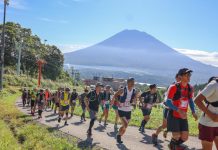Harness nature and reach places a surfboard or snowboard could never possibly take you. You know what? Just go ahead and fly. Go kiteboarding.
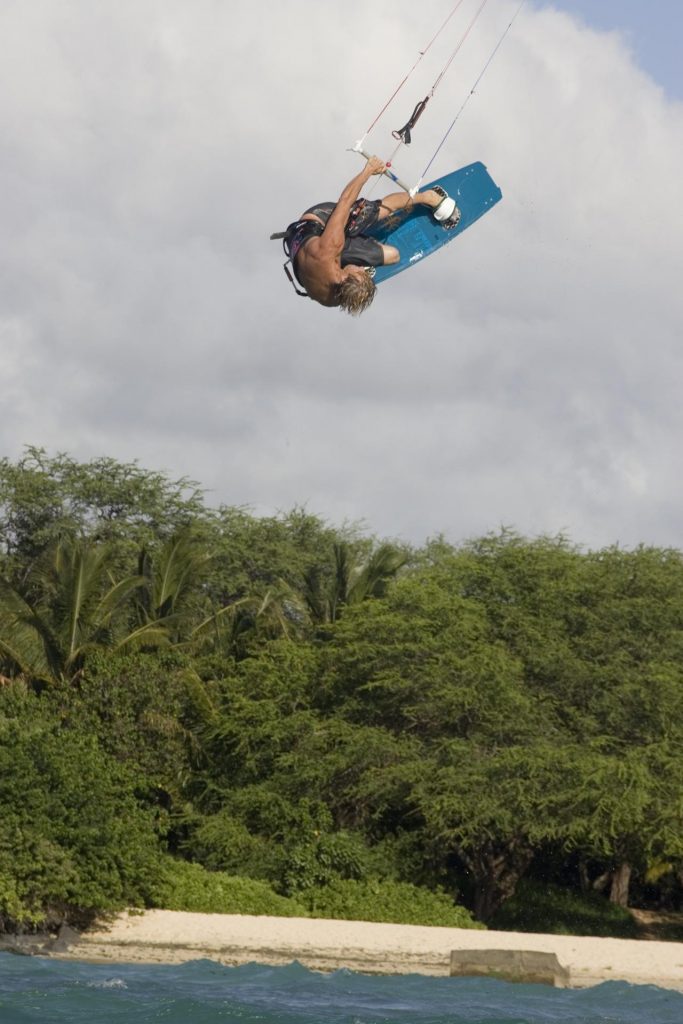
The young sport of kiteboarding, or kitesurfing if you prefer, has a lot going for it. It combines adventure and practicality, simplicity and complexity, assuring a bright future.
Reformed windsurfer and internationally renown pro Tomo Murabayashi answered simply when asked about his switch to kiteboarding several years ago.
“It’s more fun,” he said. “More dangerous, of course, but more fun.” For many board sports, the name of the game is “big air.” Kiteboarding offers the biggest.
The reason is efficiency. When asked why he made the transition, enthusiast Jason Fletcher noted that kiting equipment is compact and can fit into a backpack. Because the gear is so light, with just a few knots of wind, riders can easily be launched several meters up.
Kiteboarding was born in France in the mid-‘90s, grew up on the beaches of Maui, and then leaped to Japan when pro Robbie Naish did an exhibition in Okinawa in 2001. From there, the addictive nature of the sport took hold.
“Within a year,” said Fletcher, “I had sold all of my windsurfing equipment.” Not every windsurfer has made the transition, but many have.
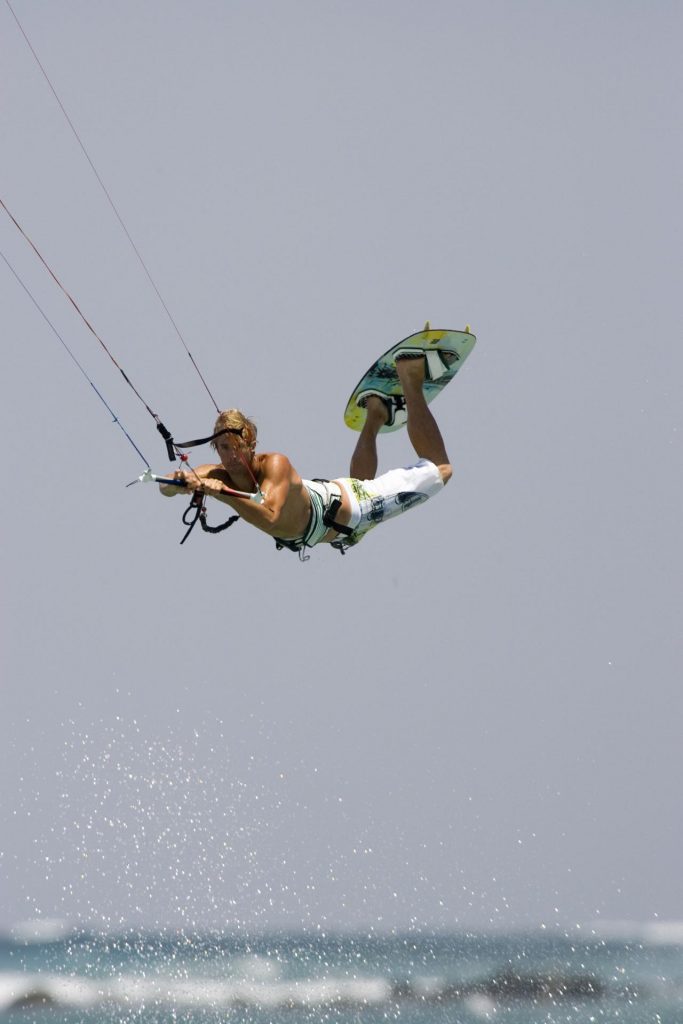
Learning to Fly
Board, kite and accessories bought new run in the ¥200,000-¥300,000 range. Used gear in recycle shops and on the Internet can get you outfitted for less than ¥100,000.
Riders stress instruction. Nick Katz of the Hang Time School in Shizuoka is the only International Kiteboarding Organization (IKO) certified instructor in Japan. However, there are experienced teachers throughout the country. In Okinawa, Mike Davison of Patriot Kites handles most of the foreign clientele, while the Tomaru brothers of Kite Club cater to Japanese. Mike has been on the water as a windsurfer and kiter for years, and the Tomaru brothers have ridden professionally here and abroad.
Seigo Akado teaches summers in Fukui and winters in Niigata, and speaks excellent English. Jun Adegawa’s Ted Surf school in Chiba is just one of dozens of small outfits geared toward Tokyo riders, while Superfly has a strong share of the market in Nagoya.
Most schools hold lessons on the ocean, though bigger lakes such as Biwako are also suitable for riding and instruction. Check out the Japan section of the Cabrinha Kites Website for a nearby kitesurfing school.
Be warned that, with the potential for damage high, kite rentals can be expensive. If you have neither the time nor the money to make it to a kiting school, do not be daunted. Kiteboarders all over the country are willing to share their expertise.
Windsurfing, wakeboarding or snowboarding experience is helpful, but not necessary. First-day riders can be standing in a matter of hours. The goal for beginners, and the key to the sport, is staying upwind. It can be accomplished with two or three months of regular practice. From there, pick a style. Go for elaborate tricks or some smooth sailing.
Be prepared for some scrapes. Sore muscles aside, with the beach as the most common launch pad, kiters are prone to lose a layer of skin off their knees and knuckles if the wind shifts and pushes up onto the sand.
Safety and experience are paramount. The death of a novice kiter out alone on a windy day in Okinawa last year shook the community. Many riders stress that a serious injury is never more than a strong, hard gale away.
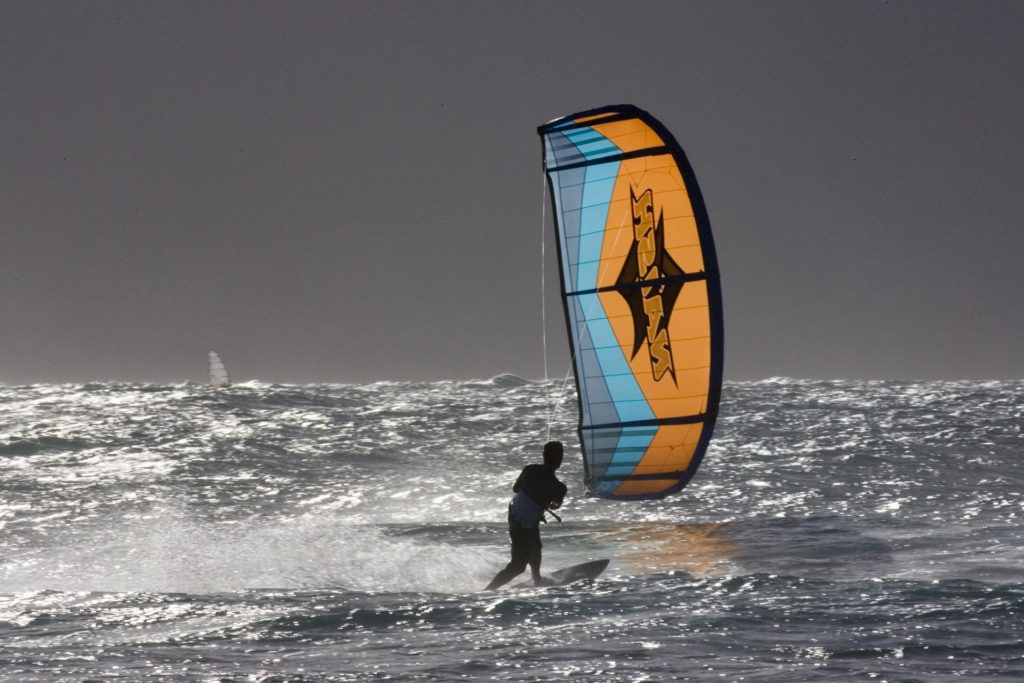
Pros and Joes
A handful of competitions each year, mainly in Okinawa and Shizuoka, attract the 30-odd sponsored riders in the country. Competitions vary. Some focus on tricks, others are based on height and airtime. It’s a fun spectator sport, and watching the pros is a great way to improve.
With limited budgets and only burgeoning interest, events are few and far between, and even then unfavorable weather often disrupts the schedule. That said, the Japan Professional Kiteboarding Association (JPKA) is sponsoring a series called the Central Kiteboarding Championships (CKB).
Sabae Beach in Chiba will host the next contest on Sept. 24, and the season will culminate with a two-day affair at Hamano Beach in Shizuoka on Nov. 25-26. On the opposite coast, Seigo will play host to events in September, October and in February.
Also in February is the annual competition in Okinawa. Check the Web for info and visit OJ’s Race & Event Calendar for updates.
As for amateurs, there are plenty. The best kiteboarder in Hokkaido, according to reliable sources, makes a living drying scallops. Another kiter trains racehorses, and a part-timer in Tokyo owns a small record label called “Breast.” Jason Fletcher is a junior high school English teacher. These are not professional athletes, but athletes all the same.
The kiteboarding community is small. The problem, at the moment, is that it is dispersed in pockets. Riders hone their skills on familiar beaches. A trip to Okinawa for a Sapporo or Chiba local is expensive and impractical.
That said, at a hot spot on a windy day, experts soar side by side with dabblers, then gather on the beach to talk shop and exchange tips. The atmosphere is friendly. No matter the size of the crowd, there is enough sky for everyone.
The cold wind blows
Save your lift pass money. Longtime instructor Seigo rides and teaches on the rolling snow-covered lands of Ojiya, accomplishing the dual goals of spreading the word about kiting as well as drawing positive attention to the area, which still suffers economically as a result of an earthquake and oil spill. To ride on snow a standard inflatable kite is necessary but, on the bottom, “Anything is OK,” he said. “Use your snowboard, your skis, a kiteboard…whatever.”
Seigo has been promoting the sport for years, with interesting results. An exhibition and competition near Tsugaike, in Hakuba, drew farmers who were expecting regular kite flying. When bodies started catapulting into the air, they were at once excited and terrified. “We were flying over frozen rice paddies and carrot farms,” Seigo said laughing.
Rod Hoy has not let the fact that he lives in Hokkaido quell his passion for kiting. He and a handful of die-hards hit frozen lakes and other open spaces, even on flat land getting a lift a snowboard cannot provide. Ski slopes do not yet allow kiting, except on the rare occasion of an event, and even then special permission is required.
Start NOW!
As the sport is relatively new and constantly developing, everyone shares ideas for gear, skills and tricks. The grass roots appeal means representatives from the manufacturers show up on the beach and listen to what riders have to say. With just a little organization, the small pockets could easily develop into a thriving association. If you start today, you could find yourself part of a soaring kite community within a year. From there, the sky truly is the limit.
Web Connection
Instruction
Tomo Murabayashi: www.etikomod.com
Kite Club: www.geocities.jp/kite_club/upgrade_flash.html
Seigo Akado: www.lesailes.jp
Patriot Kites: www.patriotkites.com
Hang Time: www.kiteboardingjapan.com
Superfly: www.superfly.jp
Ted Surf: www.ted-surf.com/kite.html
Kite Associations
Japan Kiteboarding Association: www.jpka.jp
Central Kiteboarding Championships: www.ckb-cmp.com
Kite Manufacturers
Cabrinha Kites: www.cabrinhakites.com/support/schools.php#japan
Naish Kites: www.naishkites.com
Slingshot Kites: www.sskiteboarding.com
Enthusiasts
Rod Hoy: www.airtimejapan.com
Jason Fletcher: www.kitesurfing.kujira99.com

